I have translated an article by Anne-Françoise Jaccottet that I referenced in the previous post.
2023-10-26
From the Baptism of Dionysus to the Initiation of Christ : Iconographic Language and Religious Identity

Musings on biblical studies, politics, religion, ethics, human nature, tidbits from science

I have translated an article by Anne-Françoise Jaccottet that I referenced in the previous post.

In the previous post I tried to explain my startled response when, many years ago, I first read the Gospel of Mark in a translation that muffled familiar associations with the other gospels. I recall being left with a feeling of some horror, of a Jesus who was certainly not a human-loveable Lukan figure welcoming home a prodigal son, nor a Johannine “good shepherd” nor a Matthean Jesus who promised to be with his disciples at all times.
* p. 2. Also: Hellenistic Jews and early Christians also engage with the tragedy in various and interesting ways (p.2) . . . . Dionysiac mysteries became particularly popular during the Hellenistic and Roman periods (p.31) . . . . Among ancient poets, Euripides’ popularity in antiquity was second only to that of Homer. (p.41) . . . . performances of his plays became widely accessible, including, as we shall see, to both Jews and Christians (p. 42) . . . . In addition to Euripides’ general status in antiquity, the Bacchae’s popularity in particular is also well attested. (p. 45) . . . . Given the pervasive influence and popularity of tragedy in the Greco-Roman world it is likely that the Gospel’s author knew Greek tragedy. (p. 216) — (Friesen)
** Bilby, MacDonald, Moles, Wick (see bibliography below)
My impression as an outsider reading much of the relevant scholarly literature is that most scholars seem to accept that Jesus in the Gospel of Mark is the “most human” Jesus when compared with his portrayal in the other gospels. But the more I read of Greco-Roman literature that is known to have been the literary matrix from which the gospels were composed, the harder it is for me to accept Mark’s Jesus as even the least bit genuinely “human”. The Jesus in the Gospel of Mark comes across to me very much the way a certain Greek god is depicted in literature “widely popular throughout antiquity”*.
Now I do not want to say that the author of the gospel was intentionally step-by-step modeling Jesus on Dionysus. I mean no more than that he appears to have deemed appropriate for his Jesus various Dionysian tropes that were no doubt familiar in the “wider cultural air”. Others** have written about Dionysian themes in the Gospel of John and the Acts of the Apostles. But in the light of my previous post, consider:
“For he is great in many ways, but above all it was he,
or so they say, who gave to mortal men
the gift of lovely wine by which our suffering
is stopped. And if there is no god of wine,
there is no love, no Aphrodite either,
nor other pleasure left to men.”
and
“Dionysus, son of Zeus, consummate god,
most terrible, and yet most gentle, to humankind.”
finally,
“filled with juice from vines,
suffering mankind forgets its grief; from it
comes sleep; with it oblivion of the troubles
of the day. There is no other medicine
for misery. And when we pour libations
to the gods, we pour the god of wine himself
that through his intercession man may win
the good things of life.”
“And here I stand, a god incognito,
disguised as man, beside the stream of Dirce
and the waters of Ismenus”
and having emptied himself of divinity ….
“To these ends I have laid divinity aside
and go disguised as man.”
“Your answers are designed to make me curious.” . . . “You shall regret these clever answers. . . . You wrestle well—when it comes to words” . . . “The things you say are always strange.” (Pentheus, the enemy of Dionysus, speaking to the god disguised as a man)
“The others are all blind. Only we can see.” (Tieresias, a physically blind follower of Dionysus)
On another occasion the blind prophet Tieresias explains the “true meaning” of a popular myth:
“You sneer, do you, at that story
that Dionysus was sewn into the thigh of Zeus?
Let me teach you what that really means . . . . ”
“Sir, this stranger who has come to Thebes is full
of many miracles. ”
and
“We cowherds and shepherds
gathered together, wondering and arguing
among ourselves at these fantastic things,
the awesome miracles those women [followers of Dionysus] did.”
and
“I am also told a foreigner [sc. Dionysus] has come to Thebes
from Lydia, one of those charlatan magicians”
and
“I wanted to report
to you and Thebes what strange fantastic things,
what miracles and more than miracles,
these women [worshipers of Dionysus] do.”
“For I have come
to refute that slander spoken by my mother’s sisters—
those who least had right to slander her.
They said that Dionysus was no son of Zeus,
but Semele had slept beside a man in love
and foisted off her shame on Zeus—a fraud, they sneered,
contrived by Cadmus to protect his daughter’s name.
They said she lied,”
and
“I tell you,
this god whom you ridicule shall someday have
enormous power and prestige throughout Hellas”
and
“We captured the quarry [sc. Dionysus] you sent us out to catch.
Our prey here was quite tame: refused to run,
but just held out his hands as willing as you please”
and once captured, the enemy of Dionysus announces a series of humiliating treatments, beginning with…
PENTHEUS First of all,
I shall cut off your girlish curls.DIONYSUS My hair is holy.
My curls belong to god.(Pentheus shears away some of the god’s curls.)”
“CADMUS Gods should be exempt from human passions.”
Those who know their Euripides will recognize the irony in this line. See https://vridar.org/2015/07/10/understanding-the-emotional-jesus-temple-tantrums-name-calling-and-grieving/ (also https://vridar.org/2020/08/04/jesus-the-logos-in-roman-stoic-philosophers-eyes/ and https://vridar.org/2019/05/04/once-more-we-rub-our-eyes-the-gospel-of-marks-jesus-is-no-human-character/ )
No-one should respond to this point until they have read:
As Dionysus enters into his own mysteries as a neophyte Dionysiac, so Jesus identifies with those who enter his cult through baptism. As all who follow him must take up his cross, so all who are baptized will enter into baptism with him…. But that’s another post for a later time.
My point here is that Jesus in the Gospel of Mark can, with ease, be slotted into a template that was pioneered by another god who came to the Greek world from “Asia”. It may not be irrelevant to further note that even the Jewish god Yahweh has been identified with Dionysus:
–0–
I have only scratched the surface of the questions arising here. Dionysus come to bring about the fall of the royal house of Thebes as Jesus might be said to presage the fall of Jerusalem and its Temple. Dionysus introduces horror — the divine power leaves his enemies confused and terrified. But one step at a time.
All of the above arose in my mind as I contemplated the question of the origins of Christianity itself. It is so easy to think that the gospel narrative originated with a miracle-working teacher who attracted followers, came to be very highly esteemed, so much so that after his death he was believed to have risen to heaven and to have been the messiah. That might make some sense if the Gospel of Luke was the earliest narrative evidence we have for Jesus. But unfortunately Luke’s gospel is not witnessed by any source until the latter half of the second century. Most scholars have concluded that the Gospel of Mark is the earliest narrative about Jesus. If so, and if the original reading of Mark that makes Jesus a fearful divinity is valid, then it’s back to the drawing board to try to figure out Christian origins. The above concept of the worship of Jesus (or Dionysus) can only make sense if there was already in existence a cult of Jesus (or Dionysus). It cannot explain the origin of that cult.
Friesen, Courtney J. P. Reading Dionysus: Euripides’ Bacchae and the Cultural Contestations of Greeks, Jews, Romans, and Christians. Tü̈bingen: Mohr Siebeck, 2015.
Other:
All quotes from Euripides’ Bacchae are from:

This is just a curiosity post in response to someone raising a query about the golden thigh of Pythagoras and wondering if there is any connection with the use of the word thigh as a euphemism for genitalia in the Bible.
To begin, here are the sources for the idea that Pythagoras had a “golden thigh”. It is difficult to interpret the word as anything other than a literal thigh. But we will see there is more to Greek mythical associations with the thigh in the next section.
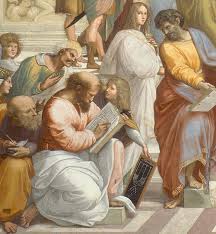
They come from “the fragments” of what ancients recorded of their knowledge of what Aristotle wrote. They are all collated in a volume available at archive.org — pages 134 and 135.
APOLLON. Mirab. 6. These were succeeded by Pythagoras son of Mnesarchus, who first worked at mathematics and arithmetic, but later even indulged in miracle-mongering like that of Pherecydes. When a ship was coming into harbour at Metapontum laden with a cargo, and the bystanders were, on account of the cargo, praying for her safe arrival, Pythagoras intervened and said: ‘Very well, you will see the ship bearing a dead body.’ Again in Caulonia, according to Aristotle, he prophesied the advent of a she-bear; and Aristotle also, in addition to much other information about him, says that in Tuscany he killed a deadly biting serpent by biting it himself. He also says that Pythagoras foretold to the Pythagoreans the coming political strife; by reason of which he departed to Metapontum unobserved by anyone, and while he was crossing the river Cosas he, with others, heard the river say, with a voice beyond human strength, ‘Pythagoras, hail!’; at which those present were greatly alarmed. He once appeared both at Croton and at Metapontum on the same day and at the same hour. Once, while sitting in the theatre, he rose (according to Aristotle) and showed to those sitting there that one of his thighs was of gold. There are other surprising things told about him, but, not wishing to play the part of mere transcribers, we will bring our account of him to an end.
Further from the same source . . . .
AELIAN, V.H. 2. 26. Aristotle says that Pythagoras was called by the people of Croton the Hyperborean Apollo. The son of Nicomachus adds that Pythagoras was once seen by many people, on the same day and at the same hour, both at Metapontum and at Croton; and at Olympia, during the games, he got up in the theatre and showed that one of his thighs was golden. The same writer says that while crossing the Cosas he was hailed by the river, and that many people heard him so hailed.
Ibid. 4. 17. Pythagoras used to tell people that he was born of more than mortal seed; for on the same day and at the same hour he was seen (they say) at Metapontum and at Croton; and at Olympia he showed that one of his thighs was golden. He informed Myllias of Croton that he was Midas the Phrygian, the son of Gordius. He fondled the white eagle, which made no resistance. While crossing the river Cosas he was addressed by the river, which said ‘Hail, Pythagoras!’
DIOG. LAERT. 8. 1. 11 (9). He is said to have been very dignified in his bearing, and his disciples held that he was Apollo, and came from the men of the north. There is a story that once, when he was stripped, his thigh was seen to be golden; and there were many who said that the river Nessus had hailed him as he was crossing it.
IAMB. V.P. 28. 140-3. The Pythagoreans derive their confidence in their views from the fact that the first to express them was no ordinary man, but God. One of their traditions relates to the question ‘Who art thou, Pythagoras?’; they say he is the Hyperborean Apollo. This is supposed to be evidenced by two facts: when he got up during the games he showed a thigh of gold, and when he entertained Abaris the Hyperborean he stole from him the arrow by which he was guided. Abaris is said to have come from the Hyperboreans collecting money for the temple and prophesying pestilence ; he lived in the sacred shrines and was never seen to drink or eat anything . . . .
But there is more. There is something suggestive about the thigh in other myths.
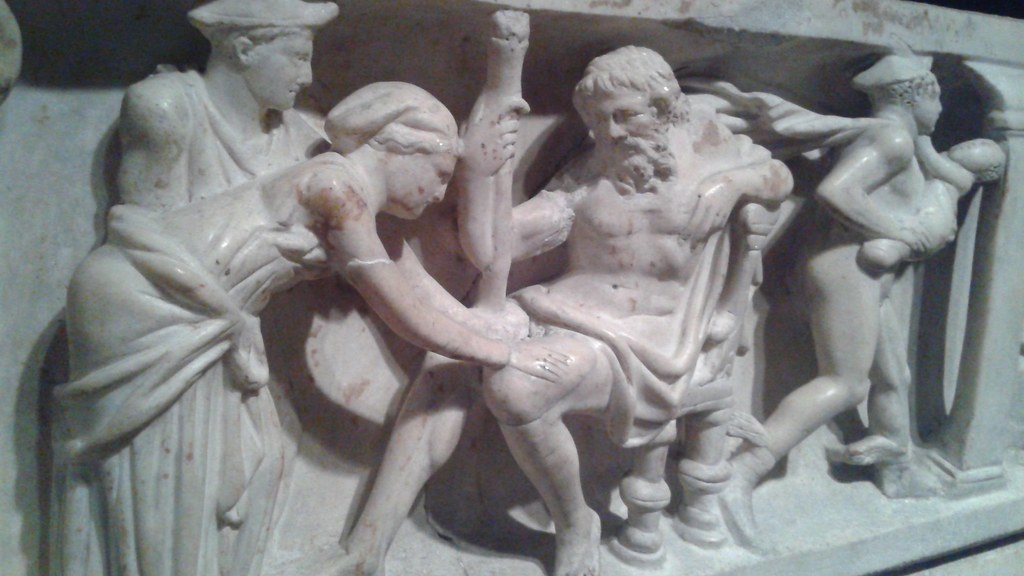
One that comes to mind is the birth of the god Dionysus from the thigh of Zeus. Zeus had seduced and impregnated Semele but when Semele died before her time to give birth (Zeus’s jealous wife had tricked Zeus into causing Semele’s death by appearing before her in all his divine glory) Zeus snatched up the child and sewed him into his thigh until he was ready to be born. (Dionysus thus was known as the twice-born god.)
But why the thigh? We believe that we are dealing here with a literal translation of a West Semitic idiom which euphemistically designated begetting: “sprung from one’s thigh” (yōṣe’ yerēkó, inaccurately translated in English Bibles by “loins”) merely meant “begotten by one,” his child.
(Astour, 195. Note that the Greek myth of Dionysus was borrowed and adapted from Phygia in Asia Minor.)
In the literature of ancient Greek myths thigh wounds are often euphemisms for castration. So . . .
Classical scholars are generally aware of the trope that in literature from around the world thigh wounds are often euphemistic for castration, or at least for impotence. But classicists have not noted how thigh wounds frequently symbolize not only physical impotence but political or spiritual impotence, and how such wounds also represent a temporary or permanent loss of heroic status for the wounded individual as well as a crisis for the group of people represented by that individual. This association apparently has its roots in a belief, held by many cultures, that semen was produced in several places in the body, including in the marrow of the thigh bone, and the thighs’ proximity to the testicles resulted in a close association that was nearly an interchange between the thighs and the male genitalia. Consequently, any kind of wound to the thigh, whether a wrenching, piercing, crushing, or other injury or mutilation, could represent a blow to a man’s physical and spiritual virility. . . . .
(Felton, 47f)
Some ancient physiology and learning why ankle wounds so often proved fatal: Continue reading “Thighs: Pythagorean, Biblical and Other”

Highlighted citations are my additions to footnotes.
4 MacDonald, Dionysian Gospel, 28-29, 30-32. — John 1:1-5, 14, 16, 18 Bacchae 1-4 ….
5 MacDonald, Dionysian Gospel, 29. — John 1:6-8 Bacchae 10-12
6 MacDonald, Dionysian Gospel, 29-30. — John 1:9-12 Bacchae 26-30
7 MacDonald, Dionysian Gospel, 38-40. — John 1:19-51 …..
8 MacDonald, Dionysian Gospel, 40-44, 67. — John 2:1-11, 20:30-31 Bacchae 142, 704-7, 712-13
9 MacDonald, Dionysian Gospel, 46-49. — John 5:2-9 Bacchae 180-98, 204-09
10 MacDonald, Dionysian Gospel, 48-49. — John 3.1-24 Bacchae 187-89, 193
11 MacDonald, Dionysian Gospel, 51-55. — John 4:1-42 Bacchae 704-5; 216-223
12 MacDonald, Dionysian Gospel, 64-67. — John 6:53-66 Bacchae 139, 735, 739, 1133-36
13 MacDonald, Dionysian Gospel, 68-71, 89-95. — John 8:12-19; 18:28-19:16 Bacchae 460-506
14 MacDonald, Dionysian Gospel, 71-73. — John 8:32-37, 58-59 Bacchae 498, 641, 432-518
15 MacDonald, Dionysian Gospel, 73-75. — John 9:1-41 Bacchae 319…
16 MacDonald, Dionysian Gospel, 75-76. — John 10:39-42 Bacchae 636-37
17 MacDonald, Dionysian Gospel, 79-81. — John 11:6-44 Bacchae 498, contra 1374-76
18 MacDonald, Dionysian Gospel, 81-82. — John 11:45-50, 53-57 Bacchae 677-774, 778-80, 784-85, 352-56
19 MacDonald, Dionysian Gospel, 82-83. — John 12:12-15, 17-19 Bacchae 216-20
20 MacDonald, Dionysian Gospel, 83-85. — John 13:1, 31-35; 14:4, 6, 31; 15:1-2, 4 ….
21 MacDonald, Dionysian Gospel, 85-87. — John 18:1-13 Bacchae 434-46
22 MacDonald, Dionysian Gospel, 96-100. — John 19:17-30 Bacchae 1115-21
23 MacDonald, Dionysian Gospel, 102-08. — John 20:1, 11-18 Bacchae 1212, 1298…
24 MacDonald, Dionysian Gospel, 108-09. — John 20:19, 21-23 Bacchae 1340-41, 1354-56; John 20:30-31 Bacchae 1388-92
25 MacDonald, Dionysian Gospel, 79.
26 MacDonald, Dionysian Gospel, 102-08
Numerous and dense parallels rise to the level of highly probable to certain indications of dependence on the Bacchae of Euripides. Such dependence can be seen in a wide range of ways, from identical and unique word choice, to themes and dramatic settings, to character developments and plot twists.
• Like Dionysus, Jesus is a god who comes to earth in mortal disguise.4
• He has a champion heralding him.5
• The people’s leaders reject him.6
• His symbolic names abound.7
• Jesus’s first, stage-setting miracle is clearly a Dionysian one; both bring forth wine miraculously.8
• Yet that is only one of numerous, identity-establishing miracles that the two share in common. Jesus and Dionysus both make old men move as if they are young again.9
• Both prompt devotion from old men in spite of competing family loyalties.10
• The Johannine Jesus provides his own miraculous supply of water and attracts women followers known for their promiscuity, just as Dionysus was famed to do.11
• Both vex their initiates/disciples with the requirement of eating the god’s raw flesh and drinking his blood.12
• Iesus Dionysos is harshly interrogated as to his provenance and paternity.13
• He is the liberator of slaves.14
• He is the one whom his opponents cannot see but the formerly blind clearly can.15
• He is the one who can miraculously escape arrest.16
• He is the one whose initiates travel safely into the underworld and are brought back to life.17
• Jesus and Dionysus are similarly opposed by god-fighters.18
• Yet both are equally acclaimed by many groups of people.19
• Jesus imitates Dionysus even as he rivals him as the true grapevine.20
• Both willingly meet their own arrest.21
• Though the ignominy of the crucifixion and lack of vengeance are uncharacteristic of Dionysus, the Johannine Jesus still plays a Bacchae-inspired role in his imitation of Pentheus, the murdered king.22
• The Johannine resurrection interweaves characteristics of Dionysus and Pentheus in its depiction of the defiled, royal corpse being raised within a garden and women followers who surround him but also do not initially recognize his body.23
• The disembodied apotheosis of the first edition of John is hallmark Dionysus.24
Other adduced parallels run the gamut from uncertain to puzzling. In these occasions, it may simply be that MacDonald knows these texts far better than readers like I do and that he sees connections that have to be explained point by point to the uninitiated. For example, Mary’s anointing of the feet of Jesus is adduced as John’s depiction of Jesus as “a different kind of lover from Dionysus.”25 Yes, Jesus is a murdered king like Pentheus, but why is it that Mary Magdalene rather than Mary the Mother plays the part of the mother of Pentheus, who cannot recognize her son’s body?26 Caveats notwithstanding, these minor quibbles and questions do not impair MacDonald’s Dionysian argument in the least.
(Bilby, 49-51. Formatting is mine)
Bilby, Mark G. 2018. “The First Dionysian Gospel: Imitational and Redactional Layers in Luke and John.” In Classical Greek Models of the Gospels and Acts: Studies in Mimesis Criticism, edited by Mark G. Bilby, Michael Kochenash, and Margaret Froelich, 49–68. Claremont, Calif: Claremont Press.

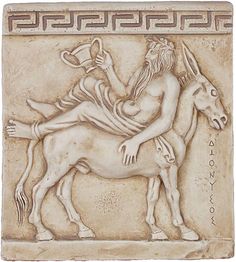 The last few days I’ve been distracted from my planned reading and posting as a result of reading something quite unexpected by Andreas Bedenbender in Frohe Botschaft am Abgrund: das Markusevangelium und der Jüdische Krieg. Since I don’t read German (except sort of through machine translators) and since most of Bedenbender’s references are in German, and since I don’t sit in a major library, that has been no easy task. But the gist of the surprising suggestion arises from one particular Greek word behind the passage in the Gospel of Mark about Jesus’ entry into Jerusalem, 10:8 (RSV):
The last few days I’ve been distracted from my planned reading and posting as a result of reading something quite unexpected by Andreas Bedenbender in Frohe Botschaft am Abgrund: das Markusevangelium und der Jüdische Krieg. Since I don’t read German (except sort of through machine translators) and since most of Bedenbender’s references are in German, and since I don’t sit in a major library, that has been no easy task. But the gist of the surprising suggestion arises from one particular Greek word behind the passage in the Gospel of Mark about Jesus’ entry into Jerusalem, 10:8 (RSV):
And many spread their garments upon the way; and others branches (στιβάδας), which they had cut from the fields.
Branches cut from the fields, presumably from trees in the fields. Would not they become an obstacle for any donkey trying to navigate the road? Other evangelists do not use that word, “branches”. Compare:
Matthew 21:8 uses κλάδους, also translated as “branches”, but not the same word as in Mark.
Luke 19:36 scraps that Markan detail completely and says only that the crowd spread their garments on the ground. No branches at all.
John 12:13 uses a different word again, “branches of palm trees” (τὰ βαΐα τῶν φοινίκων), and more sensibly than in Mark implies that they were waving them rather than setting up an obstacle course for the donkey.
Now it appears that Mark’s word for “branch/branches”, (στιβάς / στιβάδας), is unique in the Bible:
For στιβάς is found, for example, in Euripides and Herodotus, but in the New Testament it is nowhere except in Mark 11:8. It is missing in the LXX, in the Greek Pseudepigraphen to the AT, in Philo and Josephus. What, then, did Markus take after “straw-shafts,” when “branches” were within his reach? That κλάδος, which he used in 4:32 and in 13:28, will scarcely have disappeared! (Bedenbender, p. 312, adapted from machine translation.)
So Mark elsewhere used the more common word for “branches” and that makes his use of “stibas” in the triumphal entry scene more odd.
Andreas Bedenbender does not argue “strongly” for Jesus’ triumphal entry in the Gospel of Mark being invested with Dionysiac allusions, but he does point to some details that make the question reasonable. Continue reading “Jesus, a new Dionysus Triumphantly Entering Jerusalem?”


Recently an interesting collation of observations on thematic and literary similarities between New Testament narratives and wider Greek literature was posted by commenter John MacDonald. I’ve set his points out again here (with only slight editing) for those interested. (John’s more complete comment can be read here.) Some of the parallels are actually less to do with the Biblical narrative itself than the subsequent Christian tradition — something I am looking forward to addressing in a future post (from a perspective I have not read elsewhere, by the way). Reference is made to haggadic midrash — which Jewish scholars themselves note is a feature of the Gospels — but in relation to Greek texts I think it might be more correct to speak of intertextuality and mimesis.
It’s interesting to ponder the relationship between the Bible and the Greeks.
To take even one example, the parallels between Jesus and the dying-rising Greek god born of a god and a mortal woman, Dionysus, have long been posited, either in traditional myth or in places like Euripides’ ancient play ‘The Bacchae,’ with work ranging from scholars like Bultmann and others in the 19th century, to the more recent studies of scholars like Martin Hengel, Barrie Powell, Dennis MacDonald, Robert M. Price, and even popular writers like Timothy Freke and Peter Gandy. Parallels, for example, in the play ‘The Bacchae’ can be drawn as to general overarching themes, as well as to specific details of the New Testament Narratives. In ‘The Jesus Mysteries,’ several striking parallels are drawn out between The New Testament and the ‘Bacchae,’ the latter being a much earlier work. To begin with, Freke and Gandy in Jesus Mysteries write:
According to the gospels, Jesus is an innocent and just man who, at the instigation of the Jewish high priests, is hauled before the Roman Governor Pilate and condemned to die on spurious charges. Exactly the same mythological motif is found five centuries earlier in Euripides’ play The Bacchae, about Dionysus. Like Jesus in Jerusalem, Dionysus is a quiet stranger with long hair and a beard who brings a new religion. In the gospels, the Jewish high priests don’t believe in Jesus and allege that ‘His teachings are causing disaffections amongst the people.’ They plot to bring about his death. In The Bacchae, King Pentheus is a tyrannical ruler who does not believe in Dionysus. He berates him for bringing ‘this new disease to the land’ and sends out his men to capture the innocent godman …
Continue reading “New Testament in the Greek Literary Matrix”

Continuing the Jesus and Dionysus posts (sharing the 2006 Hermathena article by John Moles) . . .
The Dionysiac myth also serves as a framework through which to address the status of Christianity in relation to Judaism. The god came to Thebes, to his own people among whom he was born to Semele, but he came as a stranger, unrecognized, even punished by the king as a trouble-maker for introducing something new that had no rightful place in the established order.
Christianity must also be presented as something “new” (“new wine” and the “sweet wine” claims made at Pentecost) but as nonetheless legitimate. Luke achieves this by portraying Jesus as the natural progeny, the rightful heir, fulfilment, of the (reputedly) ancient Jewish religion. All the Jewish scriptures spoke of him.
The above is my own interpretation of the state of affairs and my own synthesis of a longer discussion by John Moles. I’m open for others to make modifications or corrections.
Interestingly another scholar, Lynn Kauppi, has found that the same scene of Paul “on trial” before the Athenians is bound intertextually to another famous Greek play, Eumenides by Aeschylus. Kauppi cites F. F. Bruce and Charles H. Talbert as earlier observers of this link.
See Kauppi: Foreign But Familiar Gods for three posts addressing the details.
In Acts 17 we come to a scene that serves as a mirror for the narrative of the whole of Acts (p. 85).
Paul enters Athens and attracts notice as a purveyor of “strange deities” and a “new teaching”. Since Paul has just visited the synagogue in Athens to discuss his teachings we know that what he is bringing to Athens is far from “brand new”. It is an interpretation of the existing Jewish scriptures.
The scene evokes the Athenian reaction to Socrates. Socrates, we know, was also accused of introducing new deities. So the Athenians are doubly in the wrong: they are repeating the sins of their forefathers who condemned the wise Socrates and they are themselves enamoured of novelty. Indeed, they are no different from the “strangers” among them who share the same shallow interests. So Athenian prestige and distinctiveness are cut down by the narrator.
“Luke” plays with the ironies of double allusions here: the Athenians are like their ancestor judges who condemned Socrates for introducing “new” ideas and like Pentheus who condemned the stranger for introducing a “strange” god. All the while, along with the “strangers” in their midst, they condemn themselves for their own love of the novelty. The Jews in Athens, on the other hand, condemned themselves for their love of the old and rejection of the new revelation.
At one level Dionysus represents the totality of pagan gods and here (in Acts 17) we find Paul using a “recognized Jewish proselytizing technique” to bring pagans to Christ through their own gods. Continue reading “Functions of Dionysiac Myth in Acts, #2”


The previous post in this series set out the evidence that there are correspondences between the canonical Acts of the Apostles and Euripides’ famous play Bacchae. This post continues presenting a lay version of classicist John Moles’ article, “Jesus and Dionysus”, published in 2006 in Hermathena. Do the allusions to the Bacchae and the Dionysiac myths and rituals in Acts actually “do” anything? Are they meaningless trappings, perhaps mere coincidences of imagery, or do they open the door to a new dimension of understanding of the work of Acts? If they “do” something meaningful that enhances our appreciation of what we read in a coherent and consistent manner then we have additional evidence that we are seeing something more than accidental correlations with the imagery and themes of the Dionysiac cult.
Anyone who does not know the play Bacchae can read an outline of its narrative in my earlier post linking it to the Gospel of John, based on a book by theologian Mark Stibbe.
We begin with some general points about the practice of imitative writing before addressing the significance of the use of Bacchae in Acts. Where I have added something of my own (not found in John Moles’ discussion, or at least not in the immediate context of the point being made) I have used {curly brackets}.
This conclusion should not surprise: similar intertextuality marks [Luke’s] engagement with the Septuagint, or, among Classical authors, with Homer. Hence, just as Classical texts are intensely ‘imitative’ in the sense of ‘imitating’ other Classical texts, so too is Acts. (p. 82)
At the end of this post we look at Luke’s literary predecessors who likewise drew upon Bacchae through which to frame their narratives of imperial efforts to impose paganism upon the Jews.
* 2 and 3 Maccabees
** Horace, Epictetus, Lucian
Bacchae remained for centuries a popular tragedy: it had been exploited by Jewish writers as a tool through which to explore the relationships between religion and politics, between Judaism and pagan (Dionysus) religion;* and by Stoic and Cynic philosophers** in philosophical and political contexts. The author of Acts (let’s call him Luke) knew of both these groups.
Don’t think, however, that Luke’s knowledge of the way other authors used Bacchae and his own similar use of it in Acts means his audience must have been restricted to a sophisticated elite. Surely he would have expected some of his audience to recognize the allusions — and we know that some of them did* — but that does not mean he must have expected all of them to have done so. We will see that in Acts itself may contain the message that “while Christianity does not need great learning, it can hold its own in that world”: compare the charge against Peter and the original apostles that they were “unlearned” even though they were “turning the world upside down” with the charge leveled at Paul that when he clearly presented much learning to his accusers, that “much learning had made him mad”.
Acts consists of a “highly varied literary texture”. {Pervo’s work demonstrating the characteristics of the Hellenistic novel that are found throughout much of Acts has been discussed on this blog.} Ostensibly the work is a form of historiography, but if so, we can note that in some types of historiography “tragedy” finds a very natural place. Herodotus’s Histories, for example, is one ancient instance of historical writing in which myth is part and parcel of the narrative. {Some scholars have also described it as a prose work of Greek tragedy.} Dennis MacDonald has identified certain Homeric influences in Acts and these Homeric episodes are themselves bound up in motifs and themes of classical tragedy.
First, note the key elements that are highlighted by the Dionysiac parallels: Continue reading “The Point of the Dionysiac Myth in Acts of the Apostles, #1″

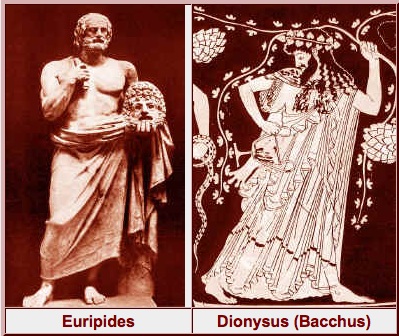 “Jesus and Dionysus in The Acts of the Apostles and early Christianity” by classicist John Moles was published in Hermathena No. 180 (Summer 2006), pp. 65-104. In the two years prior to its publication the same work had been delivered orally by John Moles at Newcastle, Durham, Dublin, Tallahassee, Princeton, Columbia, Charlottesville and Yale.
“Jesus and Dionysus in The Acts of the Apostles and early Christianity” by classicist John Moles was published in Hermathena No. 180 (Summer 2006), pp. 65-104. In the two years prior to its publication the same work had been delivered orally by John Moles at Newcastle, Durham, Dublin, Tallahassee, Princeton, Columbia, Charlottesville and Yale.
The names Moles thanks for assistance with this work are many: Loveday Alexander, John Barclay, Stephen Barton, Kai Brodersen, John Dillon, Jimmy Dunn, Sean Freyne, John Garthwaite, Albert Henrichs, Liz Irwin, Chris Kraus, Manfred Lang, Brian McGing, John Marincola, Damien Nelis, Susanna Phillippo, Richard Seaford, Rowland Smith, Tony Spawforth, Mike Tueller and Tony Woodman.
John Moles begins his article with two questions. The first of these is a dual one:
Is Acts influenced by Dionysiac myth or ritual and does it quote the play Bacchae?
Old questions, yes, but they are still being raised in the literature, as Moles indicates with the following list:
E.g. Nestle (1900); Smend (1925); Fiebig (1926); Rudberg (1926); Weinreich (1929) ; Windisch (1932); Voegeli (1953); Dibelius (1956) 190; Hackett (1956); Funke (1967); Conzelmann (1972) 49; Colaclides (1973); Pervo (1987) 21-2; Tueller (1992); Brenk (1994); Rapske (1994) 412-19; Seaford (1996) 53; (1997); (2006) ch. 9; Fitzmyer (1998) 341; Dormeyer-Galindo (2003) 49 ff.; 95; 365; Hintermaier (2003); Lang (2003); (2004); Weaver (2004); Dormeyer (2005).
The second question is the one that is the main point of the article and the one given the most space in answering:
If the answers to the above are affirmative, what are the consequences?
I have it on authority that John Moles is not a mythicist so those who read this blog with a jaundiced eye can look elsewhere for material that serves their agenda.
John Moles lists the following:
Though some of these parallels need justification, as Moles points out, it is clear that the two texts “share numerous important themes”. The possibility that the Bacchae influenced Acts is thus not implausible.
Moles lists three “crucial cases”. Continue reading “Jesus and Dionysus in The Acts of the Apostles and early Christianity”

Continuing from the Jesus and Dionysus (2): Comparison of John’s Gospel and Euripides’ Play . . . .
It would be a mistake to confine our comparison of the Gospel of John’s Jesus with Euripides’ play. Bacchae has no reference to the Dionysian miracle of turning water into wine (see the first post in this series for details) yet numerous commentators on the Gospel’s Cana Wedding miracle of turning water into wine have pointed to resonances with the Greek counterpart.
Further, it would be shortsighted to dismiss any comparison of the Gospel’s Jesus with Dionysus on the grounds that there is no obvious link between Jesus’ crucifixion and the dismemberment (the sparagmos) of the enemy of Dionysus.

In fact, when the god’s enemy undergoes humiliation and dismemberment he is really sharing in or identifying with the sufferings of the god. His name is, after all, Pentheus, with verbal resonances with “pathos” (suffering); and we have seen that the purpose of the god is to come to relieve the suffering of humanity through his gift of wine, and the play itself speaks constantly of the suffering that Pentheus must undergo as punishment for his attempt to thwart the purpose of the god. It is through the suffering of Pentheus (identifying with the sufferings of the god) that the god who comes in apparent weakness, as an effeminate mortal, is exalted — his victorious and divine power is displayed for all!
The “discovery of Dionysiac echoes in John’s story as a whole” (Stibbe, p. 2) — in particular with the miracle of Cana, (the identification, one might add, of Jesus with the vine itself), the binding of Jesus, the dialogue with Pilate and the pathos of Jesus’ crucifixion — requires us to look beyond the tragedy itself and to look at all that the myth conveyed.
Indeed, there are other myths where Dionysus inflicted the same punishment upon others apart from Pentheus. King Lycurgus of Thrace also opposed the worship of Dionysus. Dionysus punished him by sending him into a mad frenzy during which he dismembered his own son; subsequently his citizens pulled him apart limb by limb in order to remove the curse of Dionysus from their land.
An early form of the myth is that Dionysus was originally born to Persephone, queen of the underworld (Hades). (It is not insignificant, for our purposes, that some of the myths tell us Zeus intended this new child to be his heir.) The jealous wife of Zeus (Hera) who had fathered the child persuaded the evil Titans to destroy the infant. Attempting to avoid capture by the pursuing Titans Dionysus changed himself into a bull, but was caught in this form and pulled limb from limb. The Titans then devoured these dismembered pieces of flesh. Zeus punished them by destroying them with thunderbolts, and from the ashes humankind was created, a mixture of the evil of Titans and the divinity of Dionysus.
Through all of that chaos one piece of Dionysus was rescued, his heart, which was returned to Zeus. Zeus used the heart (the myths and means by which he did this vary) to give Dionysus a second birth, so he became known as the “twice-born” god.
A later version of the myth, the one that lies behind the play by Euripides, is that Zeus had fathered Dionysus with the mortal woman, Semele. Again Hera sought to kill the child, this time before it was born, by challenging Semele to see Zeus in all his glory. When Zeus showed himself in all his godliness Semele, of course, was struck dead. But Zeus rescued the child from her womb and sewed it into his thigh until it was ready to be born a second time, from the god himself.
Anyone familiar with the Gospel of John does not need to be reminded of Jesus explaining the mystery of being born a second time from above. Continue reading “Jesus and Dionysus (3)”

This post continues from my earlier one that concluded with Mark W. G. Stibbe’s “very broad list of similarities” between Euripides’ Bacchae (a play about the god Dionysus) and the Gospel of John. Stibbe discusses these similarities in John As Storyteller: Narrative Criticism and the Fourth Gospel.
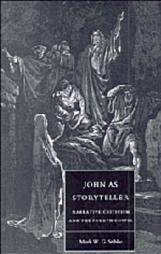 Stibbe makes it clear that he is not suggesting the evangelist
Stibbe makes it clear that he is not suggesting the evangelist
necessarily knew the Bacchae by heart and that he consciously set up a number of literary echoes with . . . that play (p. 137)
What he is suggesting is that
John unconsciously chose the mythos of tragedy when he set about rewriting his tradition about Jesus and that general echoes with Euripides’ story of Dionysus are therefore, in a sense, inevitable.
Stibbe firmly holds to the view that the Gospel of John is base on an historical Jesus and much of its content derives from some of the earliest traditions about that historical Jesus. The evangelist, he argues, was John the Elder, and he has derived his information from
His final chapter in John as Storyteller consists largely of a point by point argument that the events of the arrest, trial and crucifixion of Jesus in the Gospel are based on historical events.
At the same time, Mark Stibbe is arguing that the author, John the Elder, is constructing his supposedly historical source material in a quite literary manner. He has chosen to write about the life and death of Jesus as a tragedy, argues Stibbe, and this was quite a natural thing to do because, we are assured, Jesus’ life and death just happened to be acted out in real life like a tragedy. It was a natural fit.
That’s where Stibbe is coming from.
Mark Stibbe, a vicar of St Mark’s Church at Grenoside (Sheffield) and part-time lecturer in biblical studies at the University of Sheffield when he wrote this book, writes from the limited perspective of formal New Testament studies. So he writes from the viewpoint of a Christian studying why the Gospel of John wrote about the very real founder of his faith, Jesus, would echo aspects of a Greek tragedy.
I’m interested in a different perspective. A proper study of religion from a scientific perspective would be through anthropology, I would think. New Testament studies are primarily about analysing and deconstructing and reconstructing biblical or Christian myths. The end result must always be a new version of their myth, if we follow Claude Lévi-Strauss.
I last posted along this theme in 2011:
Since I began this new series I have found another who takes a similar perspective. Frank Zindler writes: Continue reading “Jesus and Dionysus (2): Comparison of John’s Gospel and Euripides’ Play”

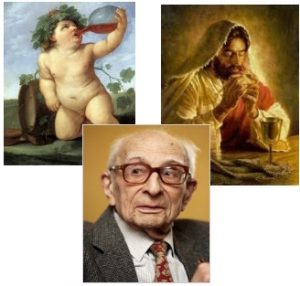 No, I am not going to argue that Christianity grew out of the worship of Dionysus or that the original idea of Jesus was based upon Dionysus. Rather, I am exploring the possibility that the portrayal of Jesus that we find in the Gospel of John is in significant measure a variant of the Greek Dionysus myth.
No, I am not going to argue that Christianity grew out of the worship of Dionysus or that the original idea of Jesus was based upon Dionysus. Rather, I am exploring the possibility that the portrayal of Jesus that we find in the Gospel of John is in significant measure a variant of the Greek Dionysus myth.
This possibility arises, I suspect, when we bring together the following:
This should hardly be a particularly controversial suggestion. Most theologians agree that the Christ we read of in the Gospels is a myth. These posts are merely attempting to identify one source of one of those mythical portrayals.
Let’s look first at what Mark Stibbe (John as Storyteller: Narrative Criticism and the Fourth Gospel) tells us about the literary affinities between the Gospel of John and the Bacchae, a tragedy by Euripides. Though the Greek play was composed five centuries before the Gospel it nonetheless remained known and respected as a classic right through to the early centuries of the Roman imperial era. Moreover, we have evidence that as early as Origen (early third century) the Gospel was compared with the play. See Book 2, chapter 34 of Origen’s Against Celsus.
But Stibbe does not argue that the evangelist directly borrowed from the play. Despite the many resonances between the two he writes:
It is important to repeat at this stage that I have nowhere put forward the argument for a direct literary dependence of John upon Euripides. That, in fact, would be the simplest but the least likely solution. (p. 139)
It certainly would be the simplest solution. The reason Stibbe thinks it is the “least likely” option, however, is the fact of there being significant differences between the gospel and the play. What Stibbe has failed to understand, however, is that literary imitation in the era the Gospel was characterized by similarities and significant differences that generally served to set the new work apart on a new thematic level. The classic illustration of this is the way Virgil imitated Homer’s epics to create the Aeneid. The differences that are just as important as the similarities and that even establish the very reason for the imitation. But all of this is jumping ahead to the next post.
Let’s look for now at the similarities, similarities that according to Stibbe may well be explained simply by the evangelist’s general awareness of the “idea of tragedy” in his culture.
It is often noted that Jesus’ miracle of turning water into wine at the wedding at Cana reminds us of the myth of Dionysus turning water into wine. Stibbe writes that such a miracle is entirely possible Continue reading “Jesus and Dionysus: The Gospel of John and Euripides’ Bacchae”

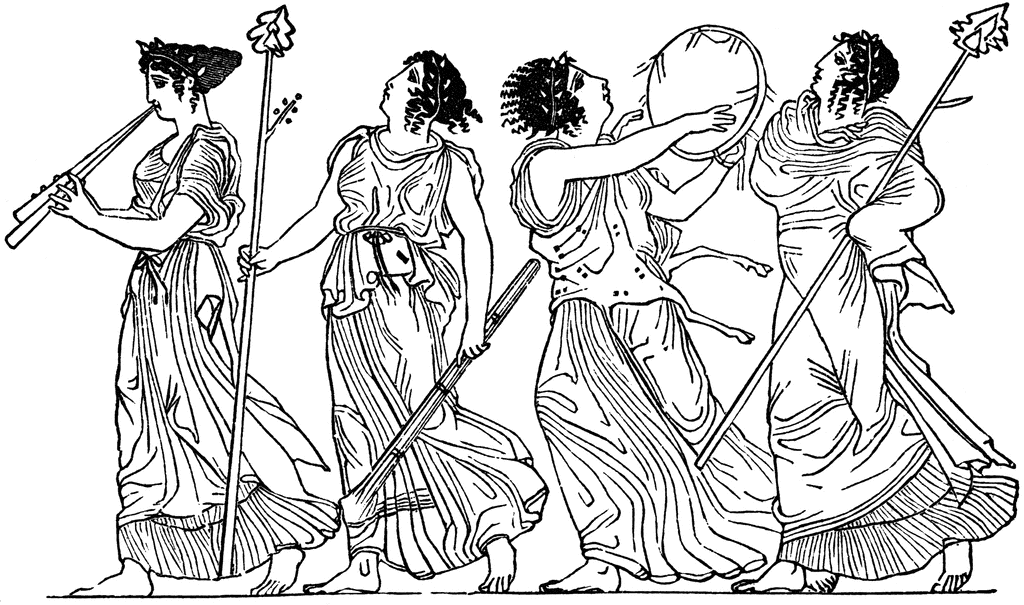 In my previous post I quoted John Taylor where he referenced chapter 5 of Dionysus: Myth and Cult by Walter Friedrich Otto. That chapter is titled “The God Who Comes”. It is about this distinctive characteristic of the god Dionysus — that, unlike other gods, he comes to mankind visibly, that is, “in the flesh”. That post pointed to a strong theological or religious meaning that such a “historic presence” promised for ongoing and future intimate relations (even entering into the persons of devotees now) in the cults of both Dionysus and Jesus.
In my previous post I quoted John Taylor where he referenced chapter 5 of Dionysus: Myth and Cult by Walter Friedrich Otto. That chapter is titled “The God Who Comes”. It is about this distinctive characteristic of the god Dionysus — that, unlike other gods, he comes to mankind visibly, that is, “in the flesh”. That post pointed to a strong theological or religious meaning that such a “historic presence” promised for ongoing and future intimate relations (even entering into the persons of devotees now) in the cults of both Dionysus and Jesus.
For those who are too impatient to read that chapter online (it is available in its entirety on Google books) here are a few excerpts.
One could almost substitute “Jesus” and “Gospel of Mark’ or such for Dionysus and his narrative in the following discussion and one would continue to nod in assent with all that is said. Jesus is far from the violent figure towards humans that Dionysus is, but one reads commentaries on Mark speaking of the “violence” with which Jesus enters “history”, with his overpowering of demons and in other ways suddenly turning the world upside down. The same commentators speak of the urgency with which Jesus acts and demands responses from those he encounters. Continue reading “The God Who Comes”


Theologians draw out spiritual lessons from the tale of God sending his Son in the flesh, performing miracles and teaching truths incomprehensible to most, and then dying and returning once again to heaven so he can be with many more followers here and now who do understand and appreciate his fleshly advent. The same theologians even explain history in terms of this theological drama. Followers of Jesus were so shocked by the unexpected demise of their hero on the cross that they feverishly set about fabricating this spiritually meaningful tale to compensate for their disillusionment by restoring among themselves a new faith and hope for a future life.
The possibility that that spiritually meaningful story might have been the original source of the tale of the historical advent of Jesus seems not to occur to them. (No, I am not saying the story was fabricated overnight ex nihilo. All stories and genres have their antecedents, and such antecedents to the Gospel story and genre are a lot more in evidence in the record than we are conditioned to quickly acknowledge.)
But let’s do a little comparative religious study to see if another ancient cult can shed any light on the question of Jesus’ historicity. Continue reading “The mythical meaning of gods (Dionysus, Jesus) being given historical settings”